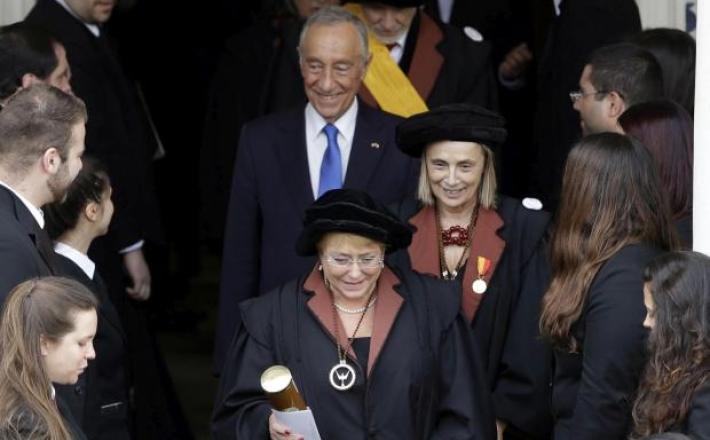Use the gender lens
Source: Development and Cooperation
The SDGs were adopted by all member states of the UN. A UNESCO report on gender equality in education demands that action must follow words. The authors propose using a “gender lens” to bring attention to social inequalities and reduce them.
In 2018, UNESCO published its sixth gender review in the context of the Global Education Monitoring Report. The idea is to track progress towards the UN Sustainable Development Goals (SDGs). This agenda commits to the principle that men and women must benefit equally from development. The UNESCO report focuses on SDG 4 (“ensure inclusive and equitable quality education and promote lifelong learning opportunities for all”) and SDG 5 (“achieve gender equality and empower all women and girls”).
The good news is that overall, the world has achieved parity in all levels of education except for tertiary education. The bad news is that there are disparities at national and regional levels, which get worse at higher levels of education.
The report extends beyond comparing the number of boys and girls in classrooms. Instead, the first part deals with the critical issues which cause gender disparities in education, including health, water and sanitation. The second part explores incentives and retribution measures that can serve SDG achievement. Ideally, governments and schools should make sure that standards are followed, and independent institutions – such as journalists, courts and NGOs – should monitor and judge their performance.
What still needs to be done?
The report introduces the term “gender lens”. It means that gender should be considered in every aspect of life. The goal is to recognise and address discrimination. In regard to education, relevant domains include.
- gender norms,
- values and attitudes,
- non-educational institutions,
- laws and policies,
- distribution of resources and
- teaching and learning practices.
For instance, the report uses a gender lens to scrutinise the lack of women in leadership positions worldwide. Across all OECD countries, women are the majority of lower secondary teachers with 68 %, but only hold 45 % of principal positions. The discrepancy between male and female leadership generally increases with the level of schooling. In Rwanda, for example, women make up 30 % of primary school principals and 19 % of secondary school principals. The authors argue that without equal female representation at every level – from school committees to legislative bodies – women’s influence is stifled, at least to some degree. They warn this can slow down and sometimes even prevent any progress towards equality.
Click here to read the full article published by Development and Cooperation on 25 August 2019.
Image by Development and Cooperation

The SDGs were adopted by all member states of the UN. A UNESCO report on gender equality in education demands that action must follow words. The authors propose using a “gender lens” to bring attention to social inequalities and reduce them.
In 2018, UNESCO published its sixth gender review in the context of the Global Education Monitoring Report. The idea is to track progress towards the UN Sustainable Development Goals (SDGs). This agenda commits to the principle that men and women must benefit equally from development. The UNESCO report focuses on SDG 4 (“ensure inclusive and equitable quality education and promote lifelong learning opportunities for all”) and SDG 5 (“achieve gender equality and empower all women and girls”).
The good news is that overall, the world has achieved parity in all levels of education except for tertiary education. The bad news is that there are disparities at national and regional levels, which get worse at higher levels of education.
The report extends beyond comparing the number of boys and girls in classrooms. Instead, the first part deals with the critical issues which cause gender disparities in education, including health, water and sanitation. The second part explores incentives and retribution measures that can serve SDG achievement. Ideally, governments and schools should make sure that standards are followed, and independent institutions – such as journalists, courts and NGOs – should monitor and judge their performance.
What still needs to be done?
The report introduces the term “gender lens”. It means that gender should be considered in every aspect of life. The goal is to recognise and address discrimination. In regard to education, relevant domains include.
- gender norms,
- values and attitudes,
- non-educational institutions,
- laws and policies,
- distribution of resources and
- teaching and learning practices.
For instance, the report uses a gender lens to scrutinise the lack of women in leadership positions worldwide. Across all OECD countries, women are the majority of lower secondary teachers with 68 %, but only hold 45 % of principal positions. The discrepancy between male and female leadership generally increases with the level of schooling. In Rwanda, for example, women make up 30 % of primary school principals and 19 % of secondary school principals. The authors argue that without equal female representation at every level – from school committees to legislative bodies – women’s influence is stifled, at least to some degree. They warn this can slow down and sometimes even prevent any progress towards equality.
Click here to read the full article published by Development and Cooperation on 25 August 2019.
Image by Development and Cooperation